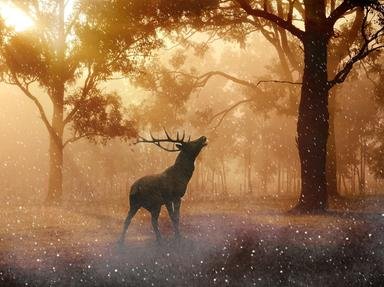Quiz Answer Key and Fun Facts
1. First of all, let's get properly introduced. What is the gaur's scientific name?
2. Formal introduction completed, let's try to locate our animal. Where on Earth would you find a gaur in the wild?
3. The title of this quiz makes it clear that the gaur is a massive creature. Which of these animals can grow even heavier than a gaur?
4. What is a distinctive feature of the gaur, which contributes to its imposing appearance?
5. In what kind of natural habitat would you be able to encounter a gaur, if you were so inclined?
6. Like all bovids, gaur are herbivores. What is their preferred food?
7. Ungulates tend to be social animals. How do gaur generally live?
8. How long is a gaur's gestation period? In this respect, they differ very little from domestic cattle.
9. All animals, even the largest ones, have something to fear. Which of the following pose the greatest danger to gaur?
10. Unfortunately, many beautiful wild animals find it hard to survive in the modern world. In 1986, the gaur's conservation status in the IUCN Red List was classed as which of the following ?
Source: Author
LadyNym
This quiz was reviewed by FunTrivia editor
rossian before going online.
Any errors found in FunTrivia content are routinely corrected through our feedback system.

